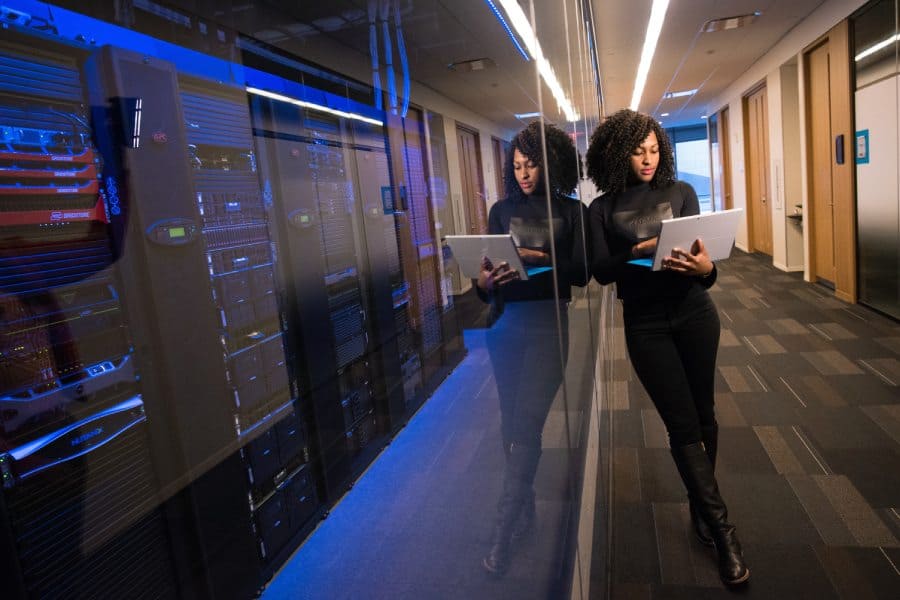Top Cybersecurity Threats in the US: Stay Protected 2024
June 15th, 2024

Top Cybersecurity Threats in the US: Stay Protected 2024
Do you know if you’re leaving the door open for cybercriminals? With technology touching more aspects of our lives, the threat of cybersecurity attacks in the US is growing. We must face dangers online, like advanced cyber attacks and hidden malware. These flaws can expose our info and put our money at risk.
Ransomware and identity theft are making big news, so it’s key to know about cybercrime’s changes. This piece looks at the biggest cybersecurity threats for Americans today. It will discuss their effects and offer tips to boost your digital protection.
Key Takeaways
- Cybersecurity threats in the US are constantly evolving
- Malware and ransomware pose significant risks to digital security
- Phishing scams remain a prevalent form of cyber attack
- Data breaches can lead to widespread identity theft
- Understanding common threats is crucial for effective protection
- Implementing strong cybersecurity measures is essential for individuals and businesses

Understanding the Cybersecurity Landscape in America
The digital world is evolving rapidly, and with it, so do the risks. In the US, cybersecurity challenges have become more intricate, impacting all of us. Let’s explore how the cyber world affects Americans today.
Read More: What is Cybersecurity? Types, Threats, and Cyber Safety Tips
The Evolving Nature of Cyber Threats
Cyber threats are not static. They change constantly. Hackers are innovative, always seeking new entrances into systems. This underlines the importance of keeping up with the latest threat intelligence. Awareness of new risks is crucial for both companies and individuals seeking to safeguard their digital assets.
Read More: Different Types of Cyber Security: A Comprehensive Guide
Impact on Businesses and Individuals
Cyber attacks can devastate both large corporations and individuals. They can lead to financial loss and harm trust for companies, and for individuals, they may result in the theft of personal information. This is why managing vulnerabilities is essential. Early recognition of weaknesses is critical to defending against potential attacks.
Read More: Essential Cyber Security Services for Small Business
The Role of Government Agencies in Cybersecurity
The US cybersecurity agency is instrumental in protecting the nation. They focus on several key areas:
- Establishing regulations for enhanced security
- Disseminating information on emerging threats
- Providing support during cyber attacks
They are equipped with specialized incident response teams for rapid intervention. This collaboration aims to maintain global cyber safety for businesses and the public.
Read More: What is the main role of cyber security?
Malware and Ransomware: Digital Parasites
Malware attacks and ransomware are big troubles in the virtual world. They find weak spots in our digital devices and cause chaos. Malware is an umbrella term for harmful software that sneaks into our devices and causes harm.
Read More: What is Malware? Malware Definition, Types, and Protection
Ransomware, a vicious type of malware, locks away your files. It demands money to unlock them. These attacks cripple businesses, leading to lost data and money. They have hit important services like healthcare, pointing out our urgent need for better online protection.
Read More: What Is Ransomware? – Definition, Prevention & More
To shield against these threats, take these steps:
- Keep your software up to date.
- Create strong, unique passwords for each account.
- Add multi-factor authentication to your accounts.
- Back up your important data often.
- Teach your staff how to spot possible threats.
By being alert and following proper security rules, you can fight off these attacks. Remember, stopping malware and ransomware begins with protecting our online lives. Prevention is critical against these cyber threats in our deeply connected world.
Phishing Scams: The Art of Digital Deception
Phishing scams are a big issue in the digital world. They trick people into sharing important info. We’ll explore these scams and how to stay safe.
Read More: What Is Phishing? – Definition, Types of Attacks, Examples
Common Phishing Tactics
Cybercriminals use social tricks to get what they want. They make fake sites or send emails that look real. These messages often scare or excite you into making quick mistakes.
Read More: What is phishing in cyber security?
Identifying Phishing Attempts
It would help if you were alert to spot phishing. Look out for strange info requests, odd sender emails, and bad writing. Always check where a link really goes before you click. Real companies don’t ask for secret info through email.
Read More: What is Identity and Access Management?
Best Practices for Avoiding Phishing Scams
Here’s how to avoid phishing scams:
- Use strong, unique passwords for each account
- Enable two-factor authentication when available
- Keep software and systems updated
- Be cautious of unsolicited communications
- Verify requests through official channels
Knowing about phishing and using strong security can keep you safe. Being aware is key to staying ahead of these online scams.
Data Breaches and Identity Theft: When Personal Becomes Public
In our digital world, data breaches are a big worry. They leak private information, making people and groups open to ID theft. Some big breaches in the recent past have affected millions of Americans, leaking personal and financial details.
Unprotected networks are often the door that cybercrooks use. If your passwords are easy, your software is old, and your Wi-Fi is open, hackers find it easy to get in. From there, they can snatch up lots of personal data.
The harm from data breaches goes well beyond just money loss. ID theft victims might see their credit, jobs, and personal ties suffer. Companies also take a hit, risking their name and even facing legal trouble.
- Use strong, unique passwords for all accounts
- Enable two-factor authentication when available
- Regularly update software and operating systems
- Be cautious when sharing personal information online
- Monitor credit reports and financial statements for suspicious activity
Securing our data is a must if we want to tackle cyber threats like these. Everyone should use strong protections and teach their staff about risks. Staying on top of new cybersecurity methods is vital, too.
Cybersecurity Threats in the US: A Comprehensive Overview
The US is constantly threatened by evolving cybersecurity dangers. These threats are risky for businesses, people, and our national safety. It’s important to examine some big cybersecurity obstacles.
Distributed Denial of Service (DDoS) Attacks
DDoS attacks flood websites with more traffic than they can handle. This overload causes them to shut down. Hackers do this by using many infected computers. As a result, businesses can face service disruptions and lose money.
Read More: What is a Denial of Service (DoS) attacks? types, Examples
Advanced Persistent Threats (APTs)
APTs are complex and last for a long time. Cybercriminals sneak into networks without being noticed. They can steal important data or mess with operations over time.
Read More: What Is an Advanced Persistent Threat (APT)?
Internet of Things (IoT) Vulnerabilities
As more IoT devices join networks, the risks increase. Unfortunately, many of these devices lack strong security, which gives hackers a chance to invade personal data or launch bigger attacks.
Read More: What is Internet of Things Security? and Why It’s Important
Supply Chain Attacks
Attackers often target weak spots in supply chains. When these weak points are hit, products or services can be messed up, and this problem can spread, hurting many organizations.
It’s very important to know about these threats. With this knowledge, organizations can make better cybersecurity plans. They need always to be alert and change their defenses to stay safe from these growing dangers.
Conclusion: Staying Ahead in the Cyber Security Game
In 2024, the world of cyber security is changing quickly. There are new, tricky ways to hack and threats to important systems. So, keeping our networks safe is more important than ever.
Cyber spying can pose big risks, especially for governments and big companies. It’s key to keep up with what’s security developments and use strong safety measures. Checking security often, training your team, and using the latest software are good defenses.
Cyber safety is not a one-time event. It requires constant work. By being alert to new dangers, we can defend our online spaces and keep our information safe. Working together, we can make the internet a safer place for all as the risks keep changing.
Read More: Who needs cyber security?
FAQ
What are the most significant cybersecurity threats facing the United States today?
In the US, key threats to cybersecurity include malware, ransomware, and phishing. Also, don’t remember data breaches and identity theft. There are dangers like DDoS attacks, APTs, vulnerabilities in IoT, and supply chain attacks to worry about.
How do malware and ransomware pose a risk to individuals and businesses?
Malware and ransomware sneak into systems to harm. Malware may steal your files or data or give criminals access. Ransomware locks you out of your stuff until you pay up.
What are some common tactics used in phishing scams?
Phishing scams use fake emails, texts, or sites to get you to share private info. They pretend to be from real places, create false emergencies, and trick you using social tricks.
How can individuals and businesses protect themselves against data breaches and identity theft?
Protecting against breaches and theft means setting strong passwords and using more than one verification step. Always update your tech, and be careful about handing out personal info online. Training your team and strong data protection help, too.
How can businesses defend against advanced persistent threats (APTs)?
Businesses need many defenses to fend off APTs. These include strong security, always watching for threats, making plans to react, and knowing the latest security information. Checking your security often, training employees well, and working with security pros are vital.
What cybersecurity risks are associated with the Internet of Things (IoT) devices?
IoT gadgets, from smart fridges to factory control systems, can be easy for hackers to access. This might lead to data theft or the use of gadgets in attacks. To stay safe, it’s important to set up these gadgets safely and update them regularly.
Get in Touch!
Browse Topics

All Posts

Cloud Computing

Cybersecurity

IT Consulting

Personal Information Security


